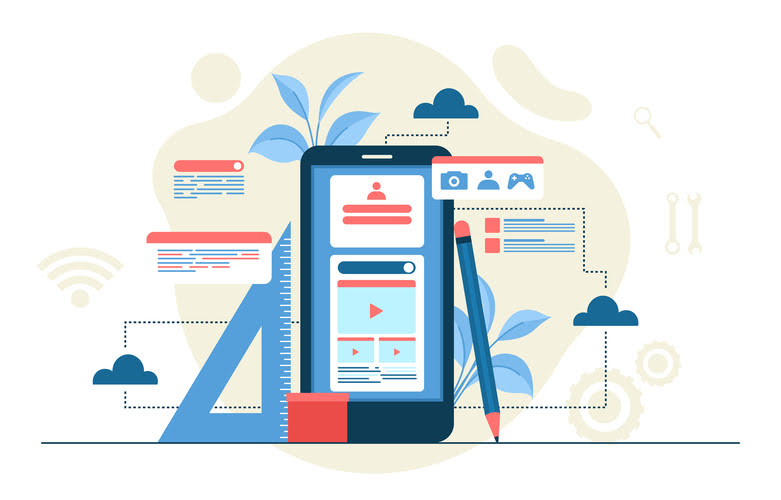Содержание
In reality, though, you must also factor in not only your own environments, but also partners environments, too. This is why you need to outline a proper hybrid integration strategy right from the start. Synatic offers a range of integration packages from its Basic, which integrates three applications, to its Enterprise Plus package. The platform delivers a true multi-tenanted cloud solution or can be provided as a private cloud / on-premises solution for customers who want their data automation solution in house. All edition packages come fully featured from the outset and require an annual contract. In a company with an implemented HIP, different departments can use solutions from different providers, remaining flexible and not interfering with each other.

Combining the various data integration functions into one platform provides the elegance that saves both time and money. IBM offers to create an effective and agile multi-cloud architecture with IBM Cloud Integration. This solution handles any type of integration, connecting legacy systems with emerging technologies. You can simply build connections using drag-and-drop functionality and secure data in accordance with GDPR.
Integration continues to be a key enabler – or inhibitor – for business innovation in every organization. Hybrid integration is the next gen of integration and combines on-premise and cloud delivery. Recent research by KPMG showed that more than 85% of insurance CEOs found that the pandemic had accelerated the digitization of their operations. Getting disparate solutions integrated and aggregated provides a competitive edge for insurers and agencies alike, and the confidence that their policies are up to date with the real risks they are covering. What I am not so good at, is fingerpointing and making competition look bad. But on several occasions, I had to face customers who asked me to answer to competition’s remarks about our integration products.
Insurance has always been a data-driven industry, providing risk assessment based on large data sets. Over the past decades, the data available to the insurance industry has dramatically accelerated, both in terms of the variety of sources and in terms of the shifts in the risks to individuals and businesses. This is why you can setup and manage security artefacts in SAP Cloud Platform Integration centrally through a Web UI. User credentials, secure parameter, Oauth credentials, keyrings,… are defined by a dedicated team member.
Hybrid Integration With Elastic Io
Thus, a hybrid integration platform is a control center that provides communication between various technology solutions and allows the company to meet changing client requirements without delay. In this environment, connecting and standardizing an organization’s data and business processes, across its entire application landscape, places a significant strain on traditional technologies, methods, and abilities. This is integration methodology helps integrate few applications in a centralized middleware and manage the connected systems.

Therefore, businesses can quickly adapt to emerging technologies, new rules and processes. A hybrid integration strategy is particularly relevant for companies with numerous partners and branch offices, as they usually generate loads of files to share. When talking about SAP, one may forget that we are now a cloud-first company.
Microsoft also offers other services to improve your solutions, such as Machine Learning, Cognitive Services, Data Lake Analytics, IoT Hub and IoT Suite. Note that within the SAP Cloud Platform Integration Service, you can also use the SAP Cloud Platform Open Connectors, hybrid integration platforms for a harmonised and simplified access to 160 cloud applications (that’s what I call “connectivity-as-a-service”). Get immediate experience building, running, and scaling applications with tools, runtimes, and frameworks from Red Hat Application Services.
Many of our customers are using our cloud products, which are all based on cloud-software paradigms including modern and standard-based interfaces. A fast, lightweight, flexible, and secure messaging platform—based on open source technologies including Apache ActiveMQ and Apache Kafka—enabling reliable delivery and real-time integration. Share data between applications and systems in real time with high throughput and low latency. Red Hat Integration is 1 of 3 groups of products in the Red Hat Application Services portfolio. Red Hat Integration enables developers to integrate applications with a range of diverse internal and external systems across hybrid architectures.
Cost Of Integration:
Again, when it comes to managed services, you need to make a decision as to whether you want to incorporate it or not. You just need to mention your system integration requirements and relax while the managed service provider takes care of the process from then on. The IT environment of modern enterprises has greatly expanded and includes a variety of services such as IoT solutions, mobile apps, SaaS platforms, social and internal networks, content management systems and more. Currently, an HIP is the key component of doing business, as it is the most effective mechanism to link all of these services and build a single workable system. A hybrid integration platform provides organizations with all the necessary tools to support a wide range of hybrid integration scenarios and make data integration between on-premise and cloud environments easier and simpler. The HIP should provide capabilities such as content-based routing, message transformation, and support for standard and well-known proprietary protocols.
Our project is the construction of a robust, self-healing data replication platform. This focuses on the best integration with DBT, granular notification systems, and the ability to harness data effectively. This can be a huge time saver for development teams who are trying to integrate applications. HIPs often https://globalcloudteam.com/ offer connectors out-of-the-box, freeing up development teams who’d previously code these connectors themselves. When organizations need to reshape their integration strategy in accordance with the new requirements of digital transformation, they increasingly turn to HIP as their reference capability framework.
These “building blocks” might include iPaaS alongside on-premises platforms such as B2B Gateway software or ESBs and ETL tools. They may also include API management platforms, IoT platforms, and managed file transfers. OpenLegacy is in the Hybrid Integration Platform product category which connects cloud-based and on-premise applications.
- Gravity is the fastest way to move data from your sources into a data warehouse so you can spend time analysing.
- Note that the following is expressing my own opinion based on my experience and knowledge.
- Most often than not, Hybrid system integration will reduce the integration cost, complexities and overall IT expenditure, when compared to a traditional method of integration using scripts.
- Microsoft also offers other services to improve your solutions, such as Machine Learning, Cognitive Services, Data Lake Analytics, IoT Hub and IoT Suite.
- Moreover, the platform should be capable of handling data at rest and in transit, in the cloud, and on-premises.
- Based on a recent study byResearch and Markets, spending on hybrid integration platforms is expected to grow to $33.6 billion in 2022 from $17.14 billion in 2017, which is a CAGR of 14.4 percent.
When using a HIP, you have the option to deploy from the cloud, running most of your ecosystem integration from there. It is also relatively straightforward to deploy since live development is possible without having to continually deploy during changes. A copywriter at SaM Solutions, Natallia is devoted to her motto — to write simply and clearly about complicated things. Backed up with a 5-year experience in copywriting, she creates informative but exciting articles on high technologies.
Mostly, centralized HIP implementation is incorporated by small to mid-sized teams with relatively simple hybrid integration requirements. If you already have an application for integration, then the expertise of a hybrid integration provider may help you modernize it and prolong its lifespan. If they want to integrate them with modern, cloud-based applications, then a HIP can help them do that. One thing that HIPs and iPaaS have in common is that they are both extremely popular and they’re both used by enterprises to make integration easier and more effective.
Api Connectivity And Management
Based on a recent study byResearch and Markets, spending on hybrid integration platforms is expected to grow to $33.6 billion in 2022 from $17.14 billion in 2017, which is a CAGR of 14.4 percent. And, by 2022,Gartnerexpects 65 percent of large organizations will implement HIPs to power digital transformation efforts. The need of the hour for enterprises is to get proactive enough to leave their long-nurtured relationship with the legacy integration systems behind and move ahead to embrace the modern integration platforms. The drastic decrease in manual efforts to write integration code for connecting various applications saves a lot of man-hours to an enterprise that can be utilized in doing other important strategic tasks. This directly boosts business productivity and let enterprise overcome bottlenecks in their digital transformation journey. The current IT landscape of most companies can be described by the word “hybrid,” meaning that business processes are managed by the aggregation of local, mobile and cloud applications.

Empower non-technical users to configure and deploy integrations and messaging with the self-service, low-code development platform. Create, deploy, monitor, and control APIs throughout their entire lifecycle. With an API-first approach, extend your integrations across hybrid and multicloud environments. Hybrid Integrations support integrations with platforms that are one of Cloud, on-premise, hybrid or embedded deployed. You can keep your existing on-premise applications intact and enable them to talk to high-end SaaS applications or cloud services in a very sophisticated manner.
Red Hat Application Services
Your business can incorporate any kind of complex integration requirements through Hybrid integration that is an appropriate mix of both. Reduce your development overhead by connecting disparate SaaS in the fraction of time. Deploy to virtually any environment and implement modern architectures with our new Anypoint Flex Gateway.
What Should You Look For In A Hybrid Integration Platform?
An HIP is a new round of development, as opposed to monolithic management structures. It integrates inner and outer services into a single environment, provides a secure gateway for transferring data, makes way for innovations and creates a competitive advantage. Customers need a holistic and future-proof integration approach, based on flexible and easy-to-use integration building blocks.
The Drive To Hybrid Integration
Together, they allow integration flows to function between locations using applications. It’s a Unified Integration Platform for connecting and collaborating with Any platform, Any application, Anywhere, and supports an Hybrid deployment model with Embedded Collaboration and Integrated Infrastructure Management. Moreover, there is a splurge in enterprises using cloud services for their applications. As per Gartner, theworldwide public cloud servicesmarket is projected to grow 17.5% in 2019 to a total of $214.3 billion, up from $182.4 billion in 2018. With hybrid integration technology, enterprises can greatly expand the number of services and products they offer. It is possible because they can integrate any device and software with any other system.
Also, an SAP system can very easily be accessed over REST APIs, be it through the Netweaver Gateway Hub or natively in the case of SAP S/4 ERP. We take a big-picture view of your organization, analyze your challenges, and help you overcome them with comprehensive, cost-effective solutions. Reduce operational complexity of real-time applications with a hosted and managed cloud service for streaming data. Support microservices developers and DevOps teams with a self-service platform and automated software development lifecycle tools. After evaluating the above-mentioned criteria, you need to plan your integration devotedly. Planning includes knowing the integration solution you are going to implement in the span of the next few months to years, depending on your business.
Deploy enterprise integration patterns based integrations using 200+ pluggable connectors to connect new and existing data across hybrid cloud. The Red Hat portfolio of middleware products helps you create a unified environment for application development, delivery, integration, and automation. It is comprised of comprehensive frameworks, integration solutions, process automation, runtimes, and programming languages.
Red Hat Integration
Onboard developers with precision and make smarter API program decisions with contextual analytics. You can easily send your data to multiple destinations such as Snowflake, AWS Redshift, and Google BigQuery. Using our platform, you’re able to replicate all the data you need with just a few clicks. We offer free historical loading, so choose as much as you need with no limits. Because Gravity is a team of engineers, we have focused on developing a platform that works consistently, speedily, and straightforwardly.
After your plan and criteria evaluation are done, move on to researching which hybrid integration platform you will need to incorporate. This depends on the requirements you have and whether the tool you look out for caters to all these requirements. There are a lot of iPaaS vendors claiming to be top-notch HIPs, so keep your research as deep and detailed as possible.
The VPN Agent is а secure VPN tunnel specifically created to access any resource in your local environment, such as your internal database or an on-prem enterprise CRM system. Our platform uses the VPN Agent to communicate data to and from your local data source safely and securely. Jumpstart your development using pre-built APIs, connectors, templates, accelerators, and other integration assets. Transform data automatically, test your APIs and integrations, and plug your enterprise integrations into CI/CD pipelines with built-in support for Maven and Jenkins. IT departments might choose to manage data integration independently; however, third-party iPaaS providers are also available. A technology shift is happening, and it’s called a Hybrid Integration Platform .
Moreover, the platform should be capable of handling data at rest and in transit, in the cloud, and on-premises. This is where a hybrid integration platform can really help to accelerate technology changes, drive cloud adoption, and modernize integrations. The brand’s limited-edition shoes generate such demand that they tend to sell out instantly, making it crucial to have digital channels that can scale to bolster surging customer volumes. Also, owing to recent IoT initiatives, for example, information retrieved from sensors in running shoes and smartwatches, integration teams now have to deal with a massive increase in data from thousands of endpoints. DCKAP Integrator has provided hybrid integrations for a wide range of businesses in a span of just 6 weeks.
Yet some data have to remain “on the ground”, whether due to regulatory or data protection requirements, or just being business-critical data remnants in not-yet-updated systems. HIP refers to integration and governance capabilities that can be applied to both on-premises and cloud-based data. The HIP consists of a range of technological “building blocks” which can come from a range of sources but are ultimately managed as one integrated whole. Simply said, modern integration solution prepares next-gen enterprises to solve business challenges in an efficient manner and build a strong foundation for business growth and prosperity.
